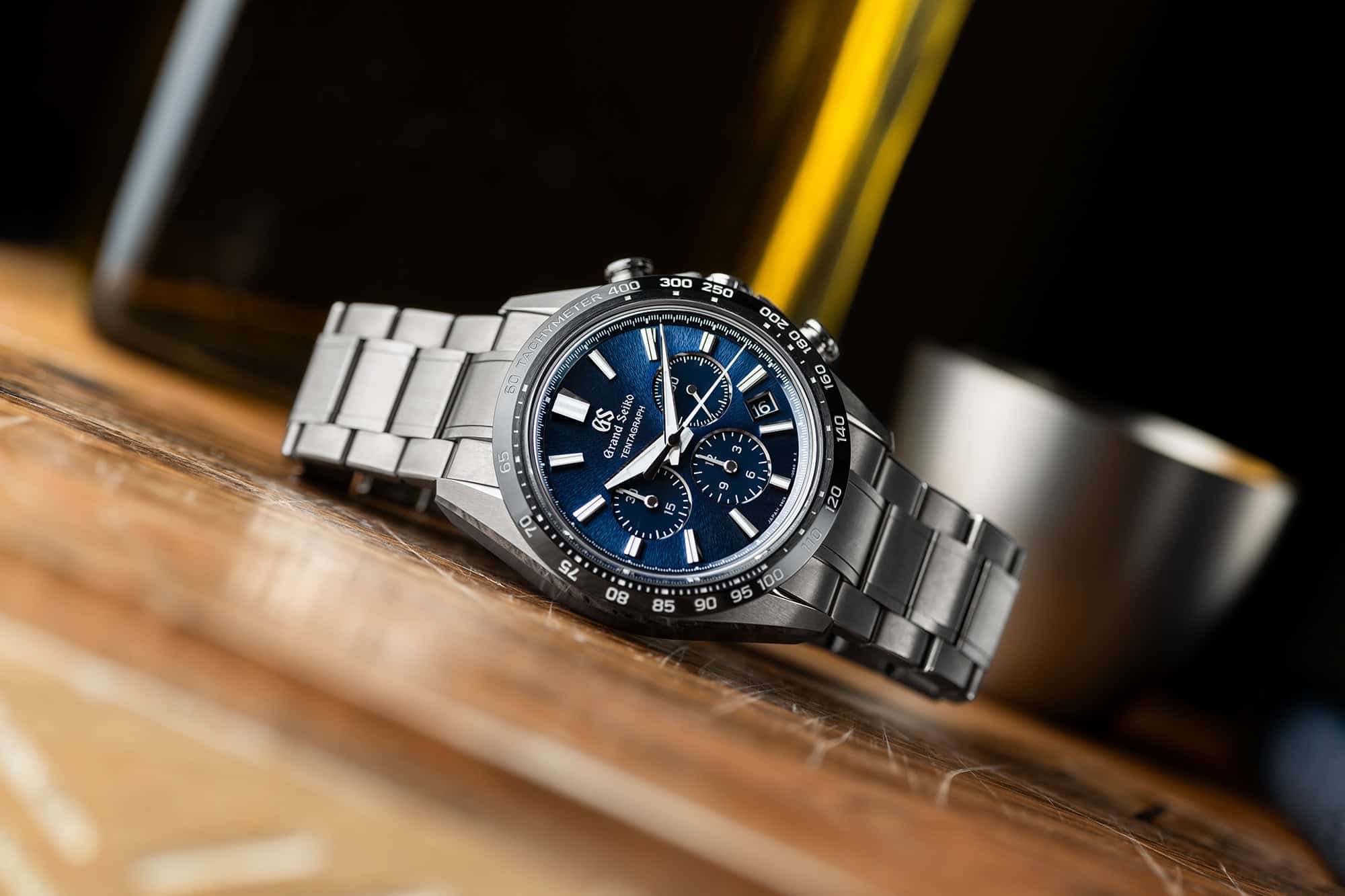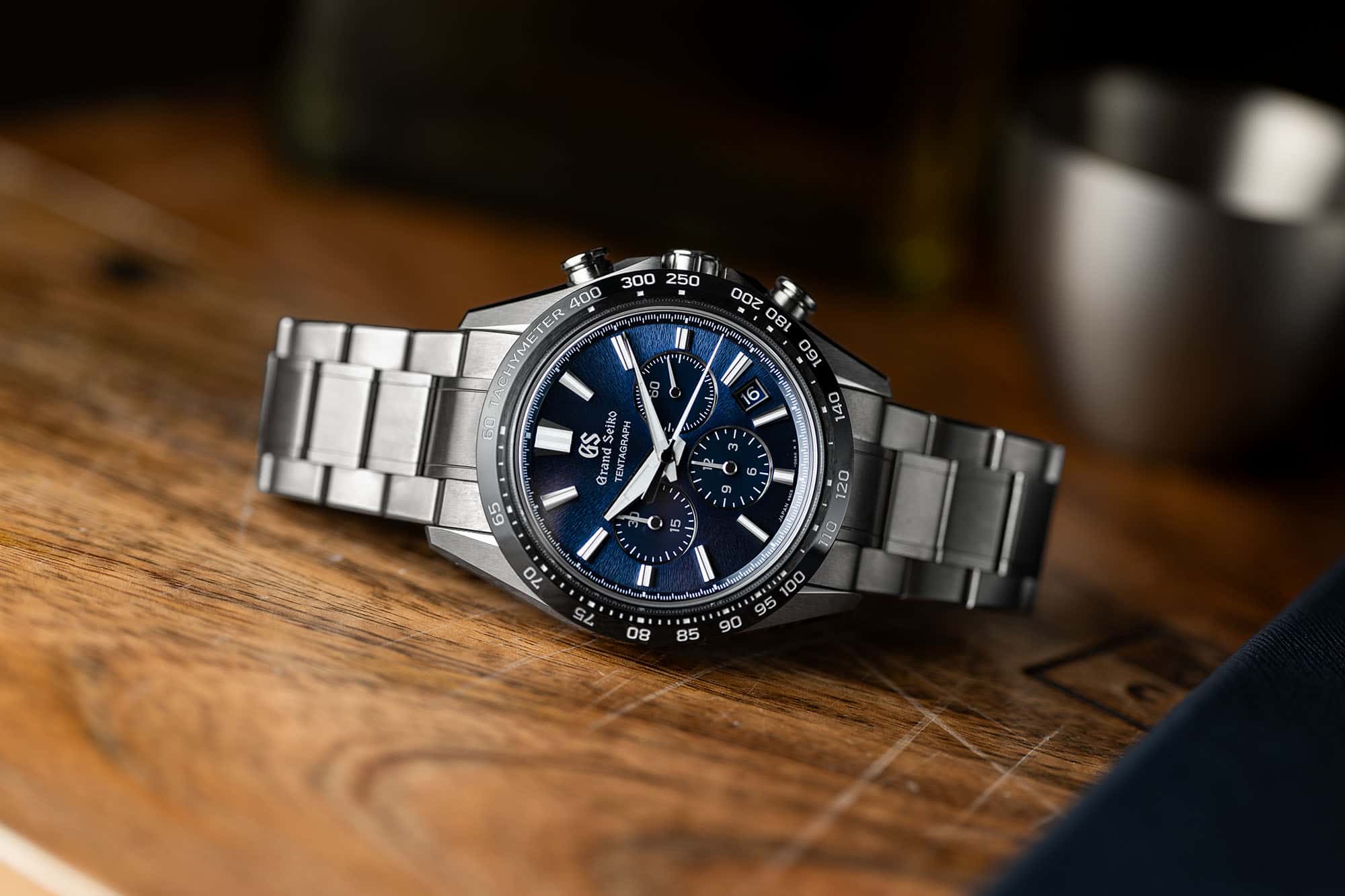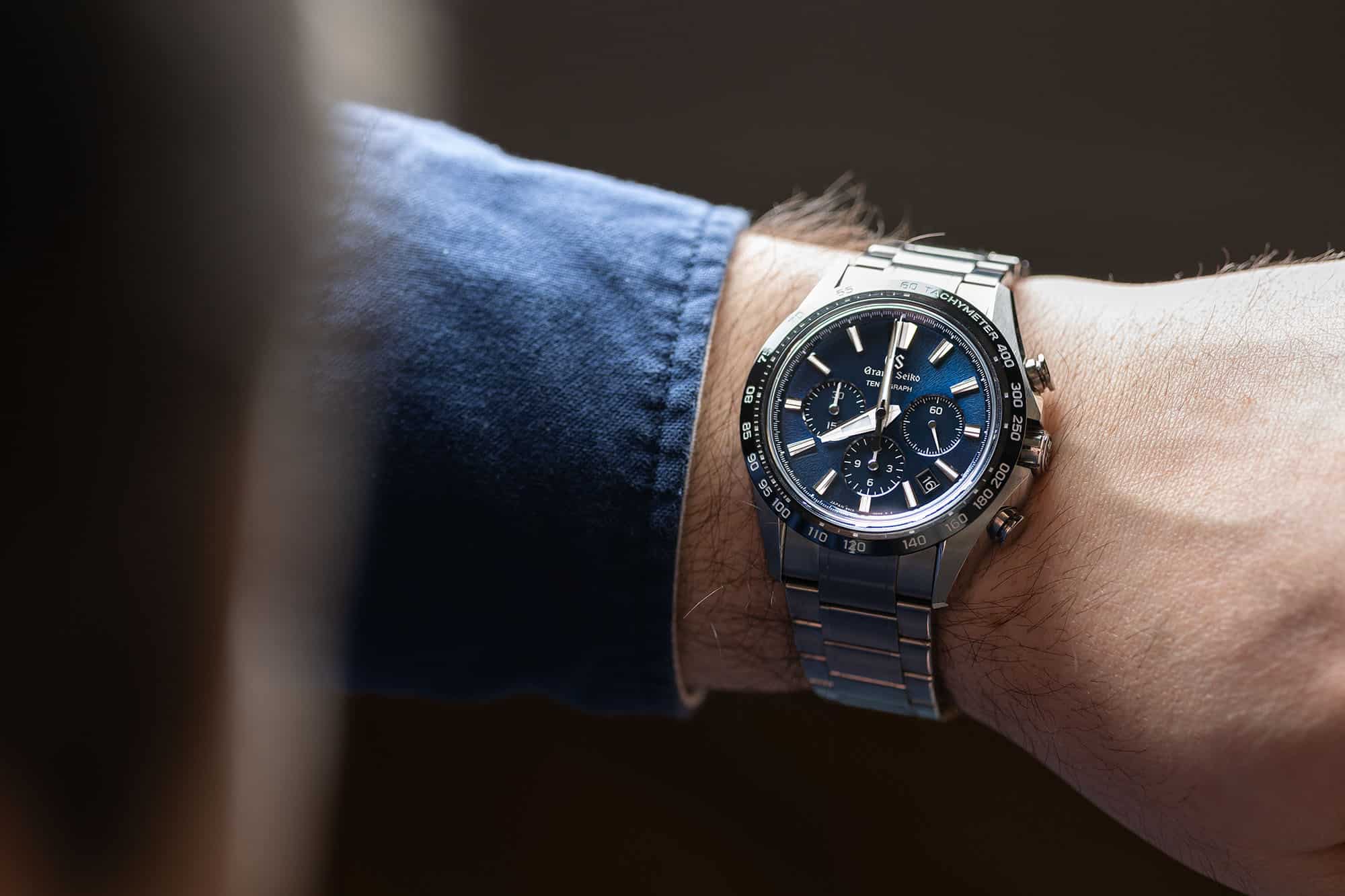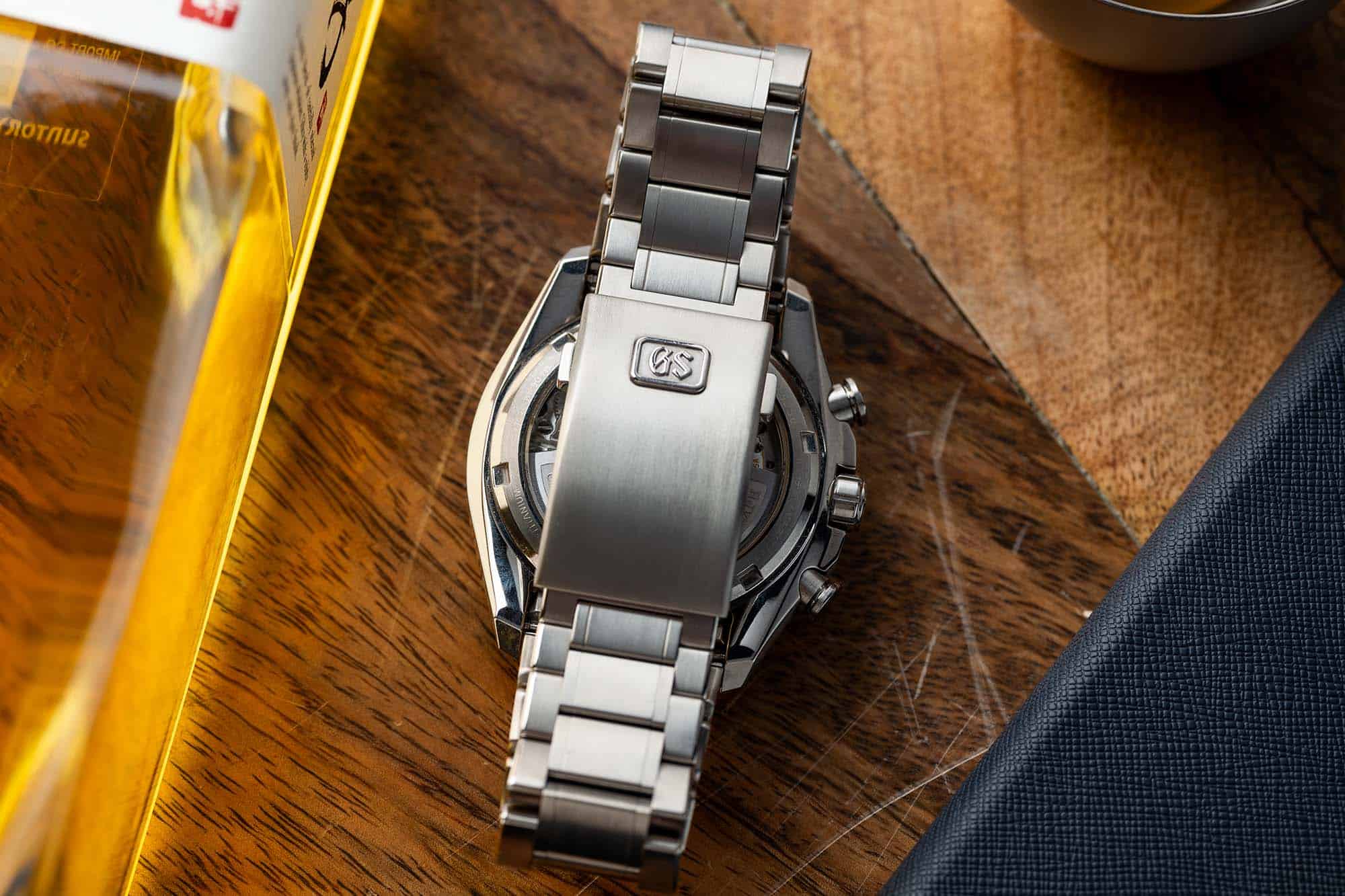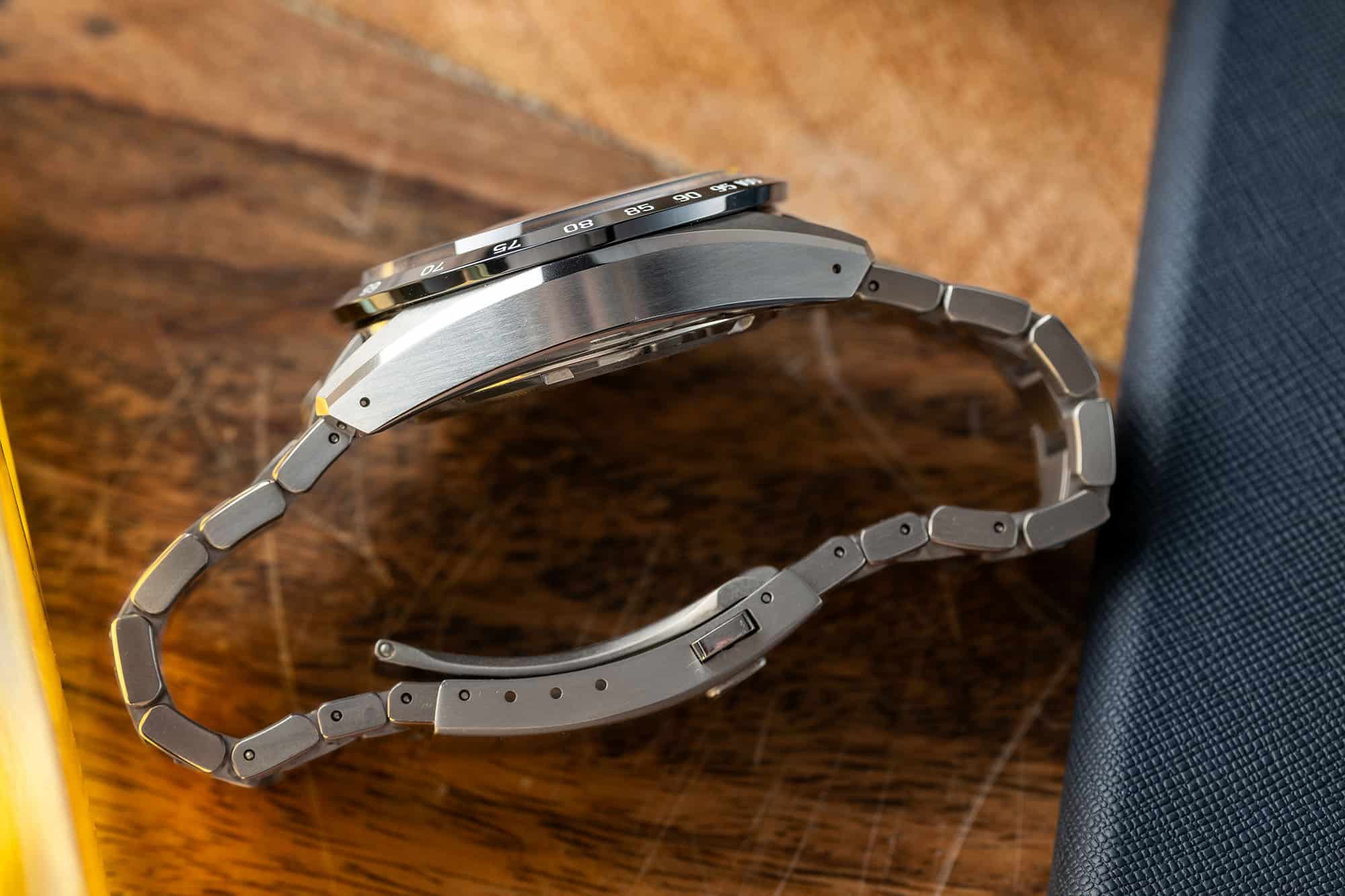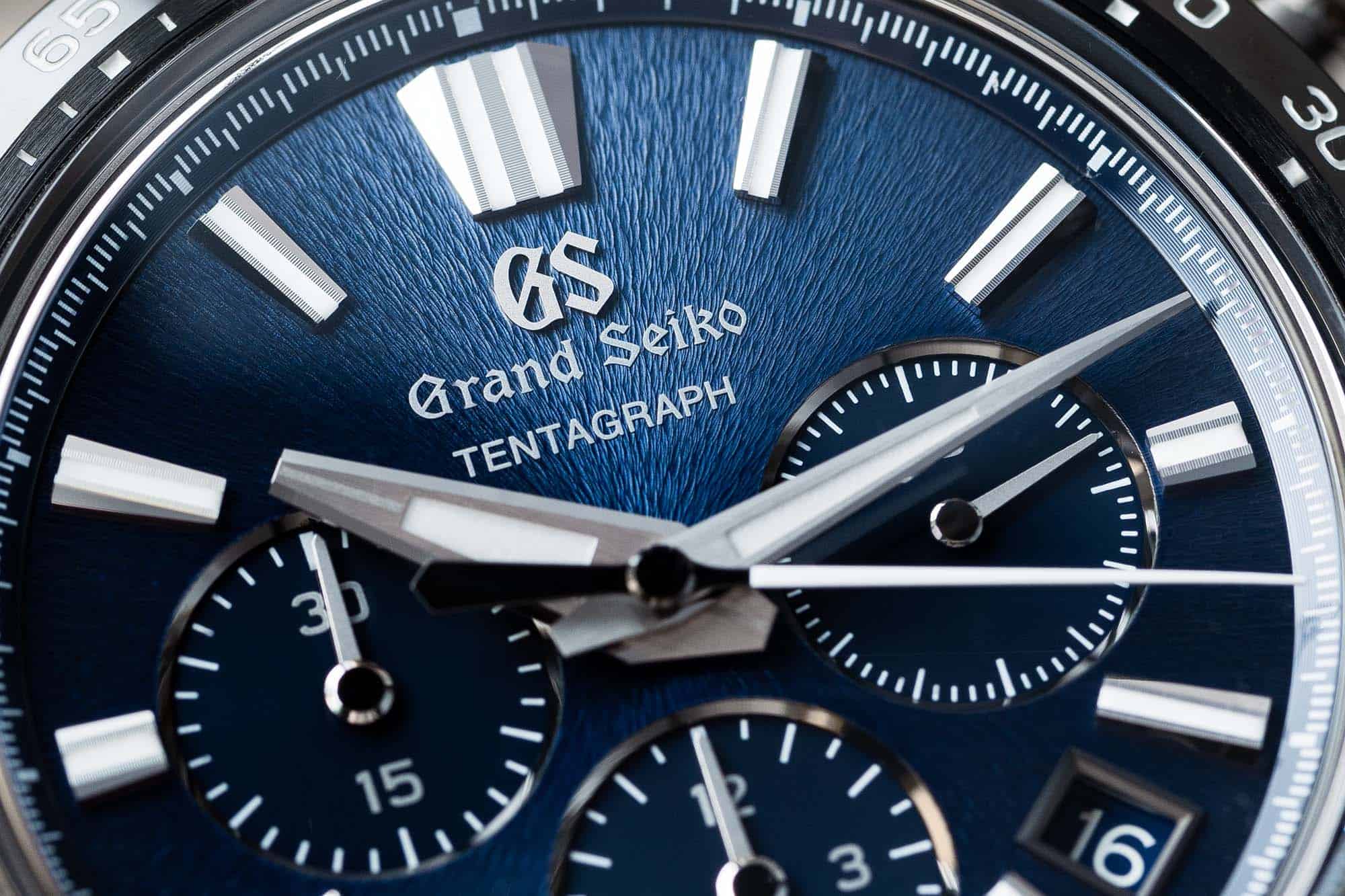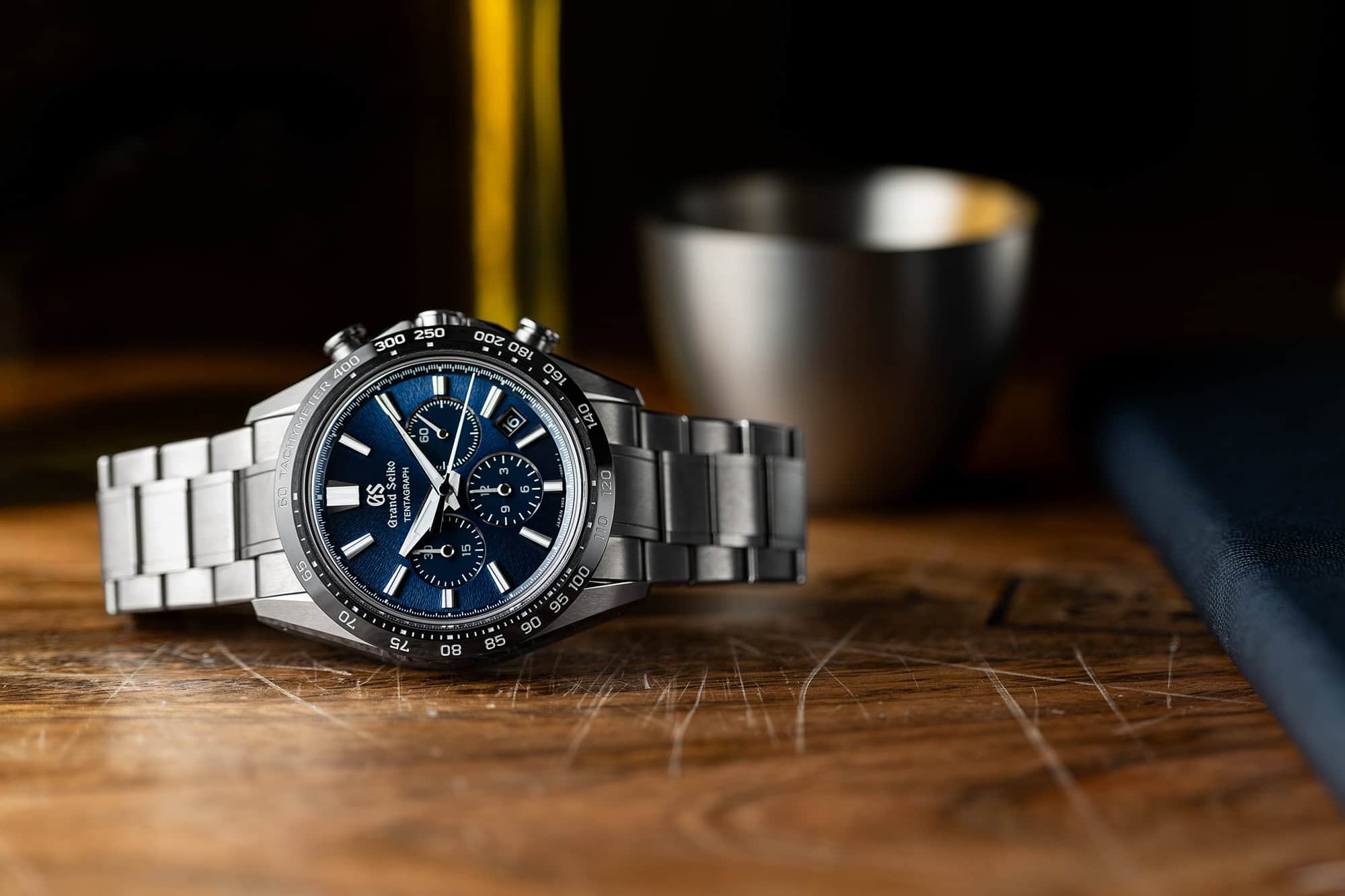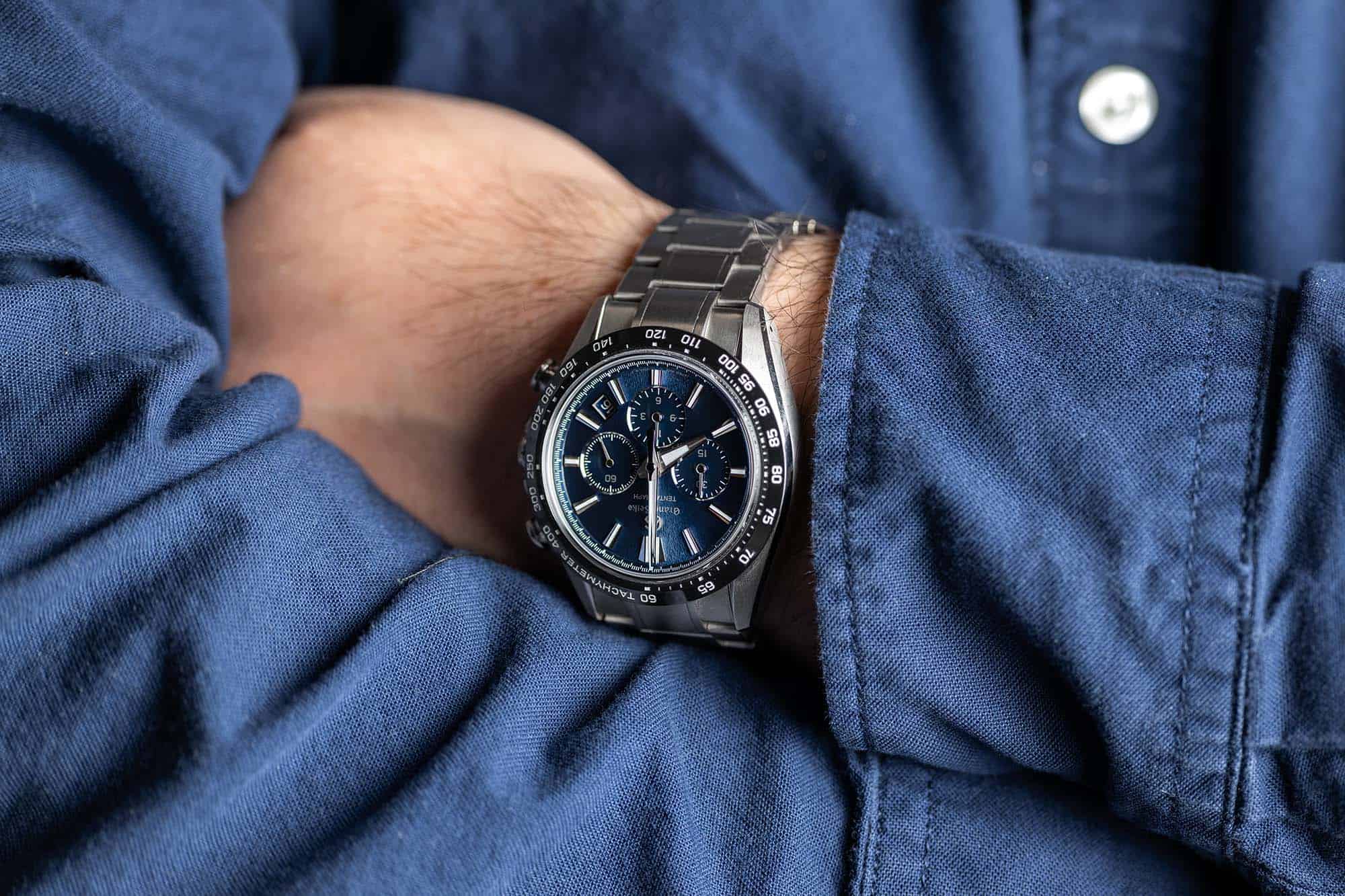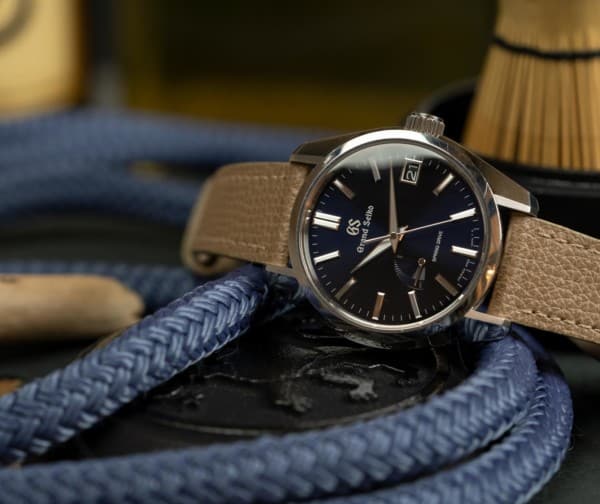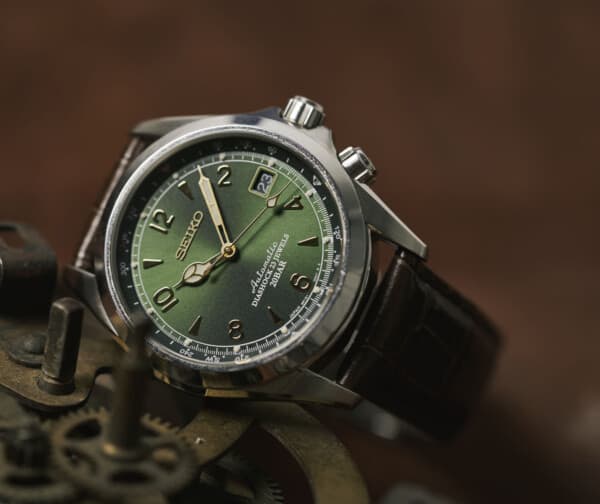The wearing experience of the Grand Seiko Tentagraph (on a bracelet that was sized to perfection) was wonderful from start to finish, largely in my estimation because of the brand’s decision to make this watch out of titanium. Few brands handle titanium the way Grand Seiko does. Picking up a Grand Seiko made from their titanium alloy will nearly always give you that sensation of impossibility – it’s so light that it almost doesn’t seem real. And the finishing, as you’d expect, is second to none. The Tentagraph features broad brushed case sides, with polished facets framing each flank, adding definition and geometric complexity to the design. I particularly love the way this case looks lin profile, with the ergonomic curve of that has come to define the Evolution 9 style of Grand Seiko’s premium pieces topped by a flying saucer-like tachymeter bezel. Grand Seiko case profiles always produce a certain level of drama, and the Tentagraph is no exception.
![]()
I’m quite partial to the Mt. Iwate pattern dial, and the execution of the blue Mt. Iwate texture on the Tentagraph looks great. This particular dial texture is most associated with Grand Seiko watches that feature high frequency movements, so it’s appropriate that we find it here on their first mechanical chronograph using the latest Grand Seiko high-frequency movement technology. Blue is also a special color for Grand Seiko, reserved for limited editions and other special pieces. The Evolution 9 dial furniture is becoming more familiar every year, and I’ve come to enjoy the wider stance of the hour markers and hands on these watches. Again, it’s Grand Seiko practicality at work. This dial is highly legible at a glance thanks to the oversized markers, but no corners have been cut on the finishing. Each one is marked with tiny ridges running horizontally either side, adding an additional element of reflectivity on each and some subtle visual interest. This kind of finishing, which is essentially only visible under magnification, is one of my favorite little Grand Seiko Easter eggs.
![]()
Some, I think, will say that the Tentagraph is too big, too thick, and too hard to wear. There’s no doubt that it’s a large watch, but I personally didn’t find it difficult to wear on my 7.5 inch wrist at all. Part of that is surely due to the lightweight titanium used in the case and bracelet, but I think credit must also be given to the team behind the design of the case. It’s 51.5mm from lug to lug, but because of the way the lugs slope, and the fact that they are somewhat short, I think this case will probably work visually on wrists considerably smaller than mine. I’m not going to do the watch writer thing and say the 43mm case wears smaller than that, but I will point out that just like everything else people might criticize the Tentagraph for, Grand Seiko likely sees the size as a feature, not a bug. At the end of the day, these watches are not meant to disappear on the wrist or be discrete. There’s an ornamental quality to them (the highly polished elements are exhibit A) and I think it’s reasonable to assume that the intent here is for the Tentagraph (and many other thicker, highly polished Grand Seikos) to always be announcing itself, showing off the intricate Zaratsu polishing through, in part, case height.
![]()
The Grand Seiko Tentagraph retails for $13,700, which is a big number that forces anyone even thinking about buying one to compare it with other watches in a similar price bracket. I think it’s very clear that the Tentagraph represents a compelling alternative to chronographs made by Rolex, Zenith, and others in the low five-figure range given the nature of the movement. It’s easy given Grand Seiko’s relatively newfound ubiquity to forget what an advancement this caliber represents in the realm of high frequency movements – there are very few, if any, calibers on the market that do what the dual-impulse escapement does. It’s a Grand Seiko invention and it’s inclusion in this watch puts it a rung above many chronographs it, in theory, competes with.
![]()
The other question about price, though, is how this watch works in comparison to other pieces in the existing Grand Seiko catalog. It’s a watch that many point to when they complain of Grand Seiko price creep – the phenomenon of the average cost of a Grand Seiko slowly (or not so slowly, depending on when you first came to the brand) rocketing upward. There’s no doubt that Grand Seiko has expanded their offerings in recent years in a segment that sits above where they came to the attention of many enthusiasts in the pre-pandemic years. If you see new releases and think it’s hard to envision paying over $10,000 for a Grand Seiko when you could have a nice one that you really loved for around $3,000 just a few years ago, I get it. But it’s important to remember the watchmaking advances they’ve made in a relatively short period of time. The higher priced stuff, in my opinion, warrants the price tag. And there are still a lot of more affordable options in the collection as well. The Tentagraph, though, is a fitting flagship at the higher end, and it will be exciting to see how Grand Seiko develops their chronograph, and the 9SA5, in the years to come. Grand Seiko




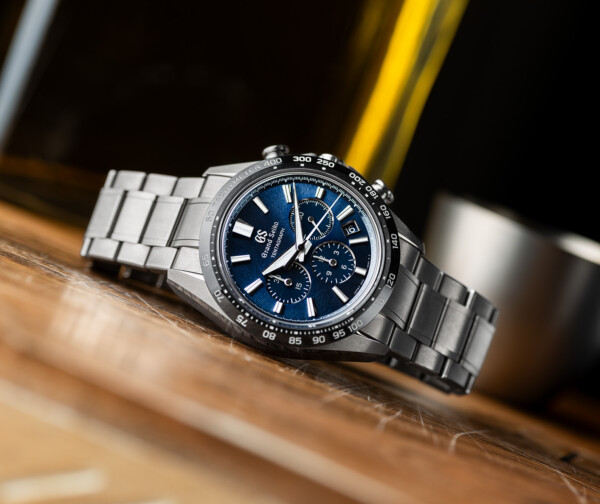
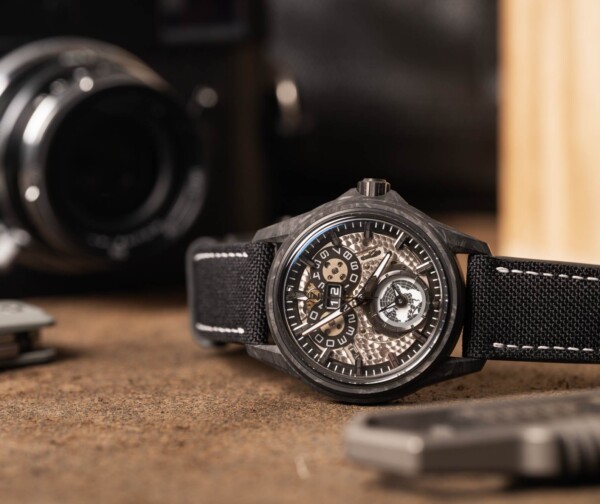
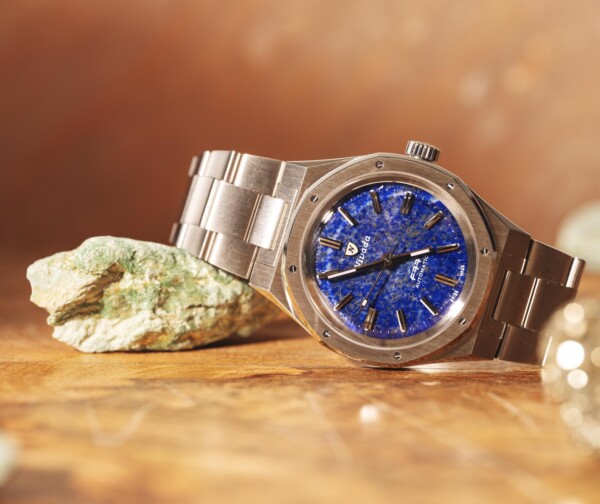


 Featured Videos
Featured Videos




